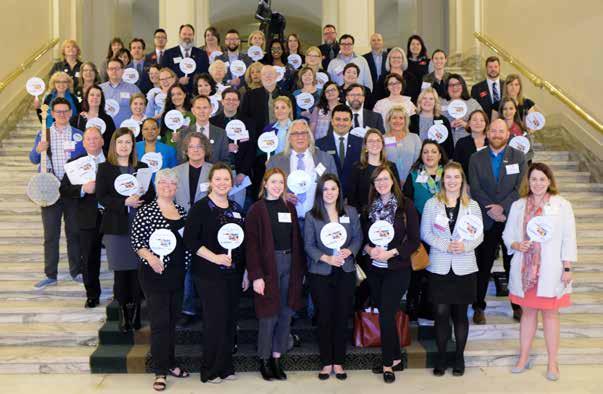HALEY PRESTIFILIPPO: Primary Elements By Cedar Marie
Hayley Prestifilippo, Cut From The Same Cloth, 2014, graphite on paper, 7” x 5”. Hayley Prestifilippo, We Have Waited, 2015, graphite on paper, 22” x 30”
Graphite is an accessible and malleable tool that provides Haley Prestifilippo with a sense of freedom. A tiny stick of wood combined with a sliver of carbon that was once a tool used in grade school is magically transformed into a medium that can also make large, beautiful drawings. Contrasting textures, swirling movements, and spaces of detailed depth and erasure become more than just marks on the surface of paper; a lion, a tiger, rabbits and storks emerge, bound in a tightly wrapped fabric in the process of unraveling— or binding even tighter in a cottony orb that is also fragmenting their bodies—or may even be their bodies. The narrative isn’t clear, as Prestifilippo conflates visual information to explore symbiotic relationships using animals as placeholders for human experiences. “Animals have their own way of being and have certain roles because they are a part of a specific group, a genus or species, for example,” Prestifilippo said. “I use animals to reference that there are different types of identities in which we also define ourselves.
18 p ro f i l e
I’m curious how being a part of a specific group or system creates a sense of necessary belonging and often a sense of othering, that us-vs-them mentality where anyone who doesn’t define themselves as fitting within specific systems—nation, religion, politics, and gender—becomes an outsider to be mistrusted or attacked. I find animals to be a perfect conduit for exploring these themes.” In small, poetic vanitases to larger scale pieces that are both beautiful and unsettling, Prestifilippo draws from art historical references, examining, for example, how animals in Baroque still life paintings show decadence and opulence; or the way Rachel Ruysch’s flower bouquets also include a few dead flowers or some rotted fruit as a subtle reminder of mortality. Prestifilippo is using the same sort of aesthetic sensibility to disrupt exquisite details with quiet but troubling visual cues that ultimately push back against the preciousness of the drawing and upend the visual narrative.
For instance, in the large composition We Have Waited, the viewer senses that something is alive underneath a depiction of bound yet floating fabric, an anonymous reclining figure or “thing writhing in midair” that Prestifilippo suddenly captured in a monochromatic graphite snapshot instead of a photograph. Predator and prey are intertwined within the fabric folds, but their usual places are subverted, as lions become prey and storks become predator. Prestifilippo wanted to entangle these relationships in the same narrative to question their roles. “When you really look at the drawing, you see that the stork is biting off one of [the] lions’ ears or chewing on an eye. It is ambiguous as to why this is happening to the lions; They cannot prevent it and they cannot escape these large, imposing birds that are generally not viewed as aggressive or violent; in western culture fables, they are viewed as bringing babies. How that relates to people and our relationships with each other is that we are all in this world together; half of us are










